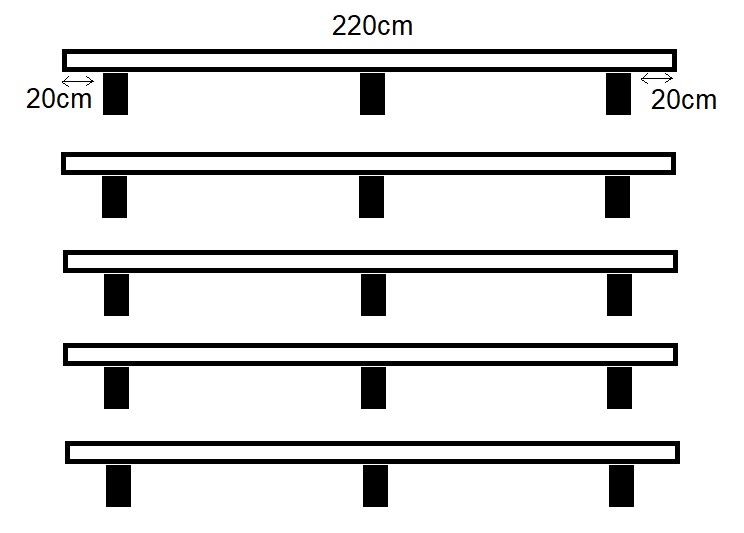I'm putting up heavy-duty book shelves up in a very long alcove. My problem is that I've discovered it's a dab and dot (dry lining) plasterboard that covers up old brick, which I've never installed on before. This type of plaster doesn't have studs.
So, the plan is to have a 10cm deep plug, going through the plaster into the brick behind.
I've made a plan below. Any comments on whether people think this will work?
- Wall fixing: COREFIX METAL & PLASTIC 100 HEAVY DUTY DOT & DAB WALL FIXINGS 10 X 95MM 24 PACK. These have good reviews and seem to be made especially for this situation. Load-bearing advertised as 100kg for two brackets.
- Shelves: Pine wood, 220cm (7.2ft) long, 23 cm (9") deep, 3.5cm (1.3") thick.
- Brackets: Heavy-duty solid steel brackets (0.75kg=1.6 lbs each)
- Load: Depending on the bigger/smaller books I put on the shelves, I've calculated the total load (incl the shelf) per shelf will be between 100kg to 140kg (220-308 pounds).
- Positioning: I'm thinking three brackets: one in the middle, and two 20cm from the wall (see sketch). I've used the Sagulator and in terms of sag that should be fine.
- Five shelves.
My worries are:
- when I started drilling the holes for the brackets, the brick behind is very varied (it's an external wall in a Victorian house). So, sometimes I think I'll have to shorten the plug a bit because it's so hard I can't drill right to the end.
- is my thinking right about the brackets? If two can support 100kg, three should go up to 150kg right? Or do I need four?
- I can distribute books so that it's more like 100kg per shelf if needed.
- is it too much stress on the wall?
So, should I go ahead, or do you recommend changing the plan in some way?

